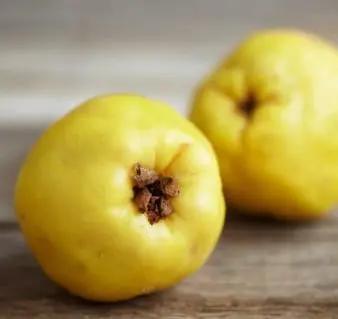According to legend, quince was first grown in Kydonia, a city on the island of Crete, so the Greeks called its fruits Kydonian apples. From the name of the city comes the Latin name of this plant-Cydonia Oblonga Mill. Yakov Marshak tells about the useful properties of quince.

Quince is a valuable fruit breed, cultivated for more than one thousand years. From time immemorial, it grew, and then was cultivated in Central Asia, where it was widely used in the preparation of both food and medicines of traditional medicine. It was used especially intensively by the Uyghurs, the indigenous people of East Turkestan. In comparison with the neighboring peoples, the Uighurs were distinguished by better health and longer life expectancy. In addition, epidemiologists noted that Uighurs are less likely to have heart attacks and strokes and are less likely to suffer from hypertension compared to their neighbors.
In medicine, the fruits, peel, leaves and seeds of quince are used.
Biochemists and physiologists have managed to explain the mechanism of influence of substances obtained from quince to maintain health and prevent certain diseases, as well as the direct medicinal properties of this plant. Quince juice has an activity that reduces the tone of the blood vessels of the arterial bed. It also lowers diastolic pressure, as well as drugs that are usually prescribed to lower blood pressure for renal hypertension. In addition, quince juice reduces blood viscosity and the percentage of deformed red blood cells, which reduces the risk of blood clots.
Other researchers have found that quince juice effectively lowers bad cholesterol (low-density lipoprotein) and triglycerides, similar to statins-medications prescribed by a doctor in cases where bad cholesterol increases the risk of heart attacks and strokes. But, unlike statins, quince extracts increase the production of good cholesterol (low-density lipoproteins that remove excess cholesterol from the body, thereby reducing the risk of heart attack and stroke).
The flavonoids contained in the quince fruit have a wide range of antioxidant activitythat prevents the development of atherosclerosis of blood vessels, and the extract from the peel has a wide antimicrobial decontamination effect. Immunologists have also revealed the anti-allergic activity of quince in atopic dermatitis. In addition, under the influence of the juice from the quince fruit, the manifestations of non-specific ulcerative colitis, which is difficult to treat, decreased, i.e., the area of ulceration of the large intestine was reduced.
Some cancer scientists recommend using quince fruit in the diet for certain types of cancer — as studies have shown, in kidney and colon cancer, eating quince slowed the development of tumors and increased the death of cancer cells.
In Turkish folk medicine, quince is used as a remedy for diabetes. It is able to lower the concentration of glucose in the blood of diabetics, increasing the sensitivity of the pancreatic tissues to increased glucose concentrations.
If quince were not such a delicious and flavorful product, it would still have to be eaten because of its useful properties, and scientists would have to study these properties!









